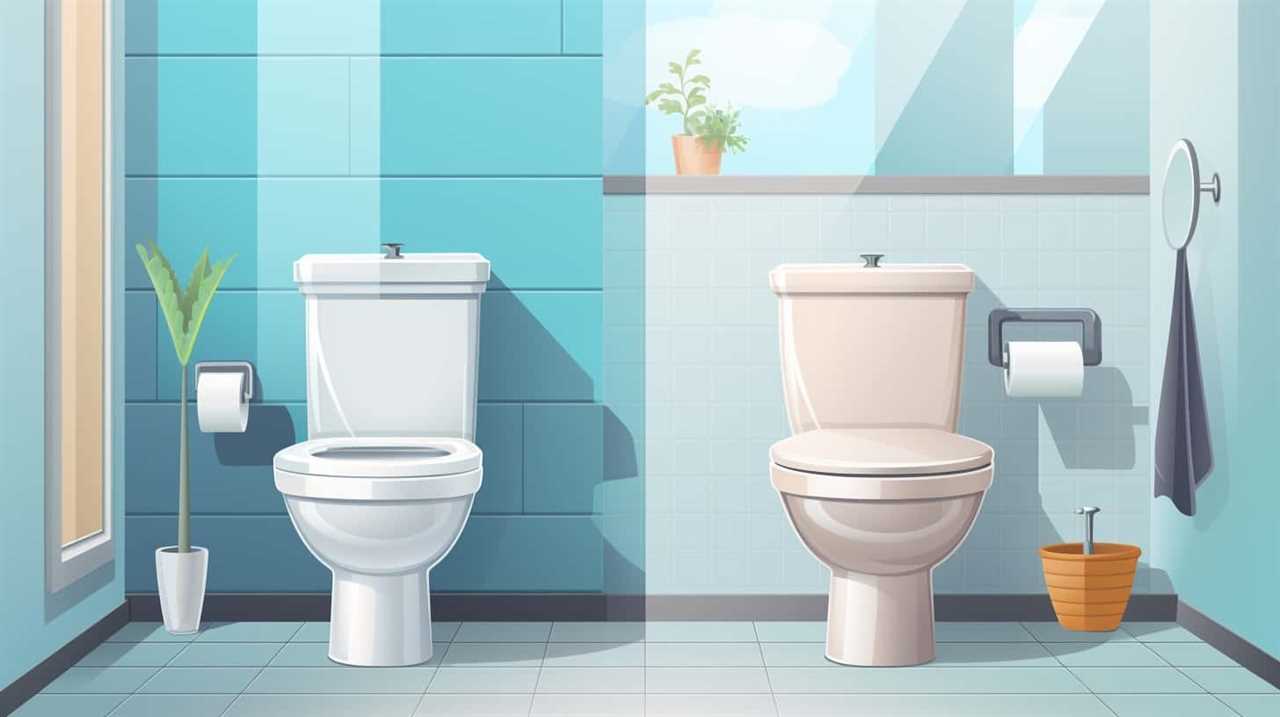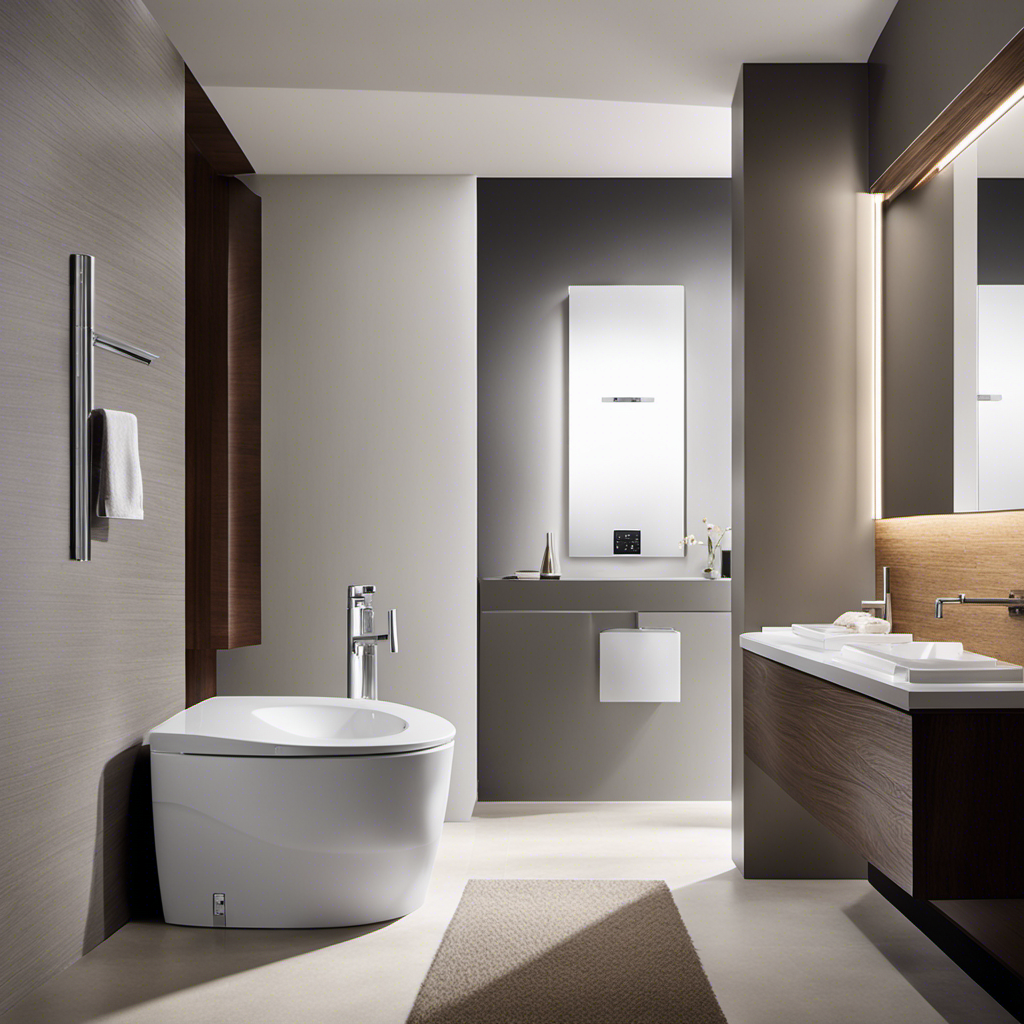Are you tired of your toilet behaving like a mischievous ghost, flushing itself at all hours of the day and night? Fear not, for we have the solution to your plumbing predicament.
In this step-by-step guide, we will show you how to fix a toilet that keeps flushing itself. From checking the flapper valve to adjusting the float level, we will empower you with the knowledge to tackle this issue like a seasoned plumber.
Get ready to regain control of your bathroom!
Key Takeaways
- Checking and replacing the flapper valve is a common solution for a toilet that keeps flushing itself.
- Adjusting the float level can help regulate the water flow and prevent self-flushing.
- Inspecting and replacing the fill valve may be necessary if there are no visible issues with the flapper valve or float assembly.
- If all else fails, it is recommended to call a professional plumber to diagnose and fix the issue.
Check the Flapper Valve
We should start by checking the flapper valve in order to determine the cause of a toilet that keeps flushing itself. The flapper valve is located at the bottom of the toilet tank and is responsible for sealing off the water flow when the toilet isn’t in use.
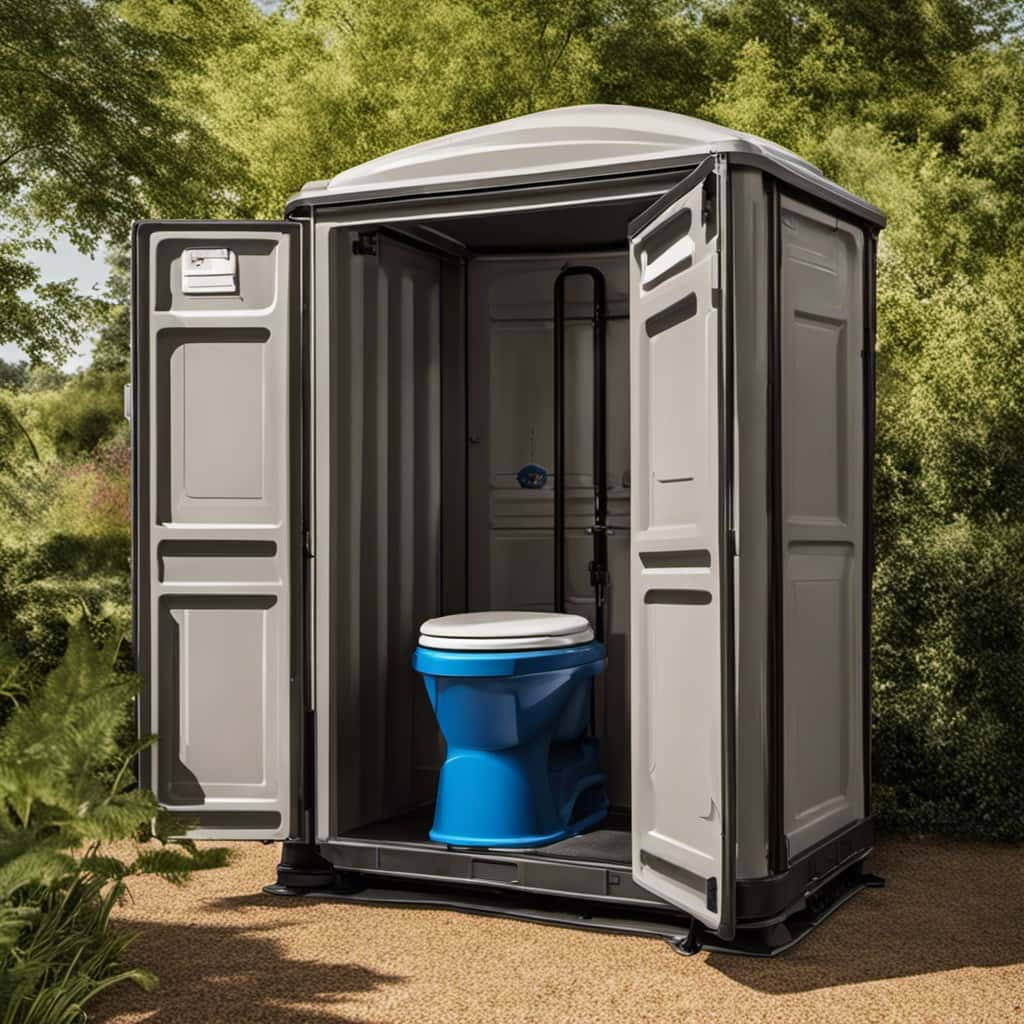
First, turn off the water supply to the toilet by closing the shut-off valve. Flush the toilet to drain the tank completely.
Inspect the flapper valve for any signs of damage or wear. If it appears worn or damaged, it should be replaced.
Next, check the chain length that connects the flapper valve to the flush handle. Ensure that there’s enough slack in the chain for the flapper valve to close fully. Adjust the chain length if necessary.
Adjust the Float Level
To adjust the float level, start by locating the float assembly inside the toilet tank. The float is usually a hollow ball or cup attached to a metal rod. It rises and falls with the water level in the tank, controlling the flow of water during flushing.

To fix water pressure issues or increase water flow, you may need to adjust the float level. First, turn off the water supply valve to the toilet. Then, locate the adjustment screw or clip on the float assembly.
If the water flow is too low, unscrew the adjustment screw or slide the clip downwards to lower the float level. If the water flow is too high, tighten the adjustment screw or slide the clip upwards to raise the float level.
Inspect the Fill Valve
To continue troubleshooting a toilet that keeps flushing itself, let’s now inspect the fill valve for any potential issues.
The fill valve is responsible for regulating the water level in the tank after each flush. Here are some steps to help you inspect the fill valve:

- Turn off the water supply to the toilet by shutting off the valve located behind the toilet.
- Flush the toilet to drain any remaining water in the tank.
- Remove the tank lid and locate the fill valve, which is usually on the left side of the tank.
- Check for any visible signs of damage or debris in the fill valve.
- If there are no visible issues, you may need to replace the fill valve to resolve the problem.
By inspecting the fill valve, you can identify any potential problems and decide if you need to replace it.
Once you have addressed the fill valve, you can move on to the next step of troubleshooting: cleaning or replacing the flush handle.
Clean or Replace the Flush Handle
To address the issue of a toilet that keeps flushing itself, it is necessary to clean or replace the flush handle. The flush handle is the mechanism that initiates the flushing process when pressed down. Over time, it can become dirty or worn out, causing it to malfunction and result in a toilet that constantly flushes itself. Cleaning the flush handle is the first step to try and resolve the issue. Start by using a mild cleaning solution and a soft cloth to remove any dirt or grime that may be interfering with its proper function. If cleaning doesn’t solve the problem, it may be necessary to replace the flush handle. Look for a replacement handle that is compatible with your toilet model and follow the manufacturer’s instructions for installation.
| Cleaning Products Recommendations | Common Causes of Toilet Flushing Issues |
|---|---|
| Mild cleaning solution | Dirty or worn out flush handle |
| Soft cloth | Malfunctioning flush handle |
Call a Professional Plumber if Necessary
If we’re unable to fix the issue ourselves, we may need to consider calling in a professional plumber. Here are some common toilet flushing problems that may require the expertise of a plumber:
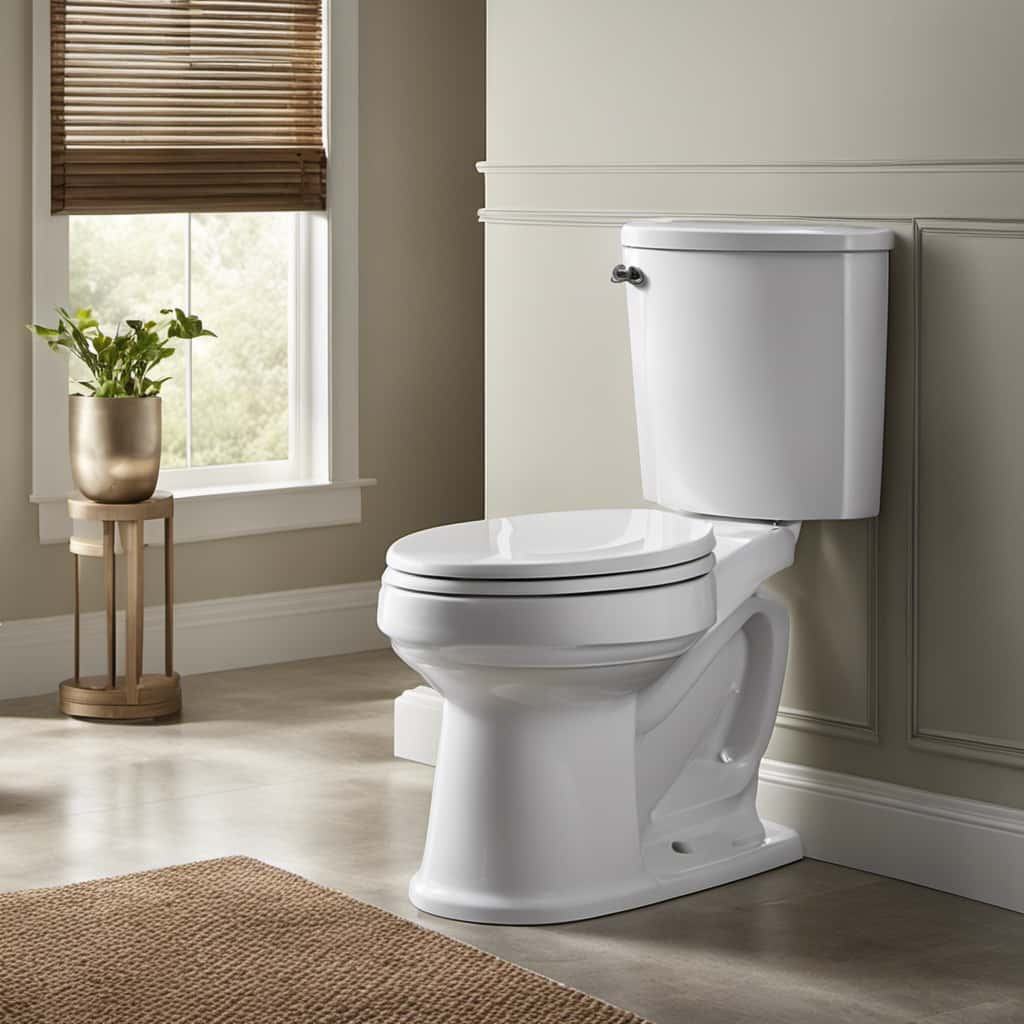
- Clogged Drain: A plumber can use specialized tools to remove any blockages in the drainpipe that may be causing the toilet to flush itself.
- Faulty Fill Valve: If the fill valve isn’t functioning properly, a plumber can replace it with a new one to ensure proper water flow and prevent self-flushing.
- Damaged Flapper or Flush Valve: A plumber can inspect and replace any damaged flapper or flush valve that may be causing the toilet to continuously flush.
- Water Pressure Issues: A plumber can check the water pressure in your home and make necessary adjustments to prevent self-flushing.
- Internal Mechanism Problems: If the internal mechanisms of the toilet are malfunctioning, a plumber can repair or replace them to fix the self-flushing issue.
Frequently Asked Questions
How Do I Know if My Toilet Has a Problem With the Flapper Valve?
First, check if your toilet has a problem with the flapper valve by following these steps. Look for signs of a faulty flapper, such as constant running or incomplete flushes. Toilet flapper replacement may be necessary to fix the issue.
Can I Adjust the Float Level Myself, or Do I Need to Hire a Professional?
We can adjust the float level ourselves to troubleshoot the flapper valve. It is a simple process that involves adjusting the water level in the tank. Hiring a professional may not be necessary.
What Are the Signs That the Fill Valve May Be Causing the Toilet to Flush Itself?
When troubleshooting a toilet that keeps flushing itself, signs that the fill valve may be at fault include inconsistent water levels, continuous running, and water overflowing into the toilet bowl. Adjusting the float level could potentially fix the issue.
How Do I Clean the Flush Handle, and What Should I Do if Cleaning Doesn’t Resolve the Issue?
If cleaning the flush handle doesn’t resolve the issue, we may need to consider a toilet flush handle replacement. Troubleshooting common toilet flushing issues requires a step-by-step approach to identify and fix the underlying problem.

How Much Does It Typically Cost to Hire a Professional Plumber to Fix a Toilet That Keeps Flushing Itself?
Hiring a professional plumber to fix a toilet that keeps flushing itself can be costly. The cost varies depending on the extent of the problem and the plumber’s rates.
Conclusion
In conclusion, by following these step-by-step instructions, you can easily fix a toilet that keeps flushing itself.
Remember to check the flapper valve, adjust the float level, inspect the fill valve, and clean or replace the flush handle if necessary.
By taking these simple actions, you can restore your toilet to its proper functioning state and avoid the hassle of constant flushing.
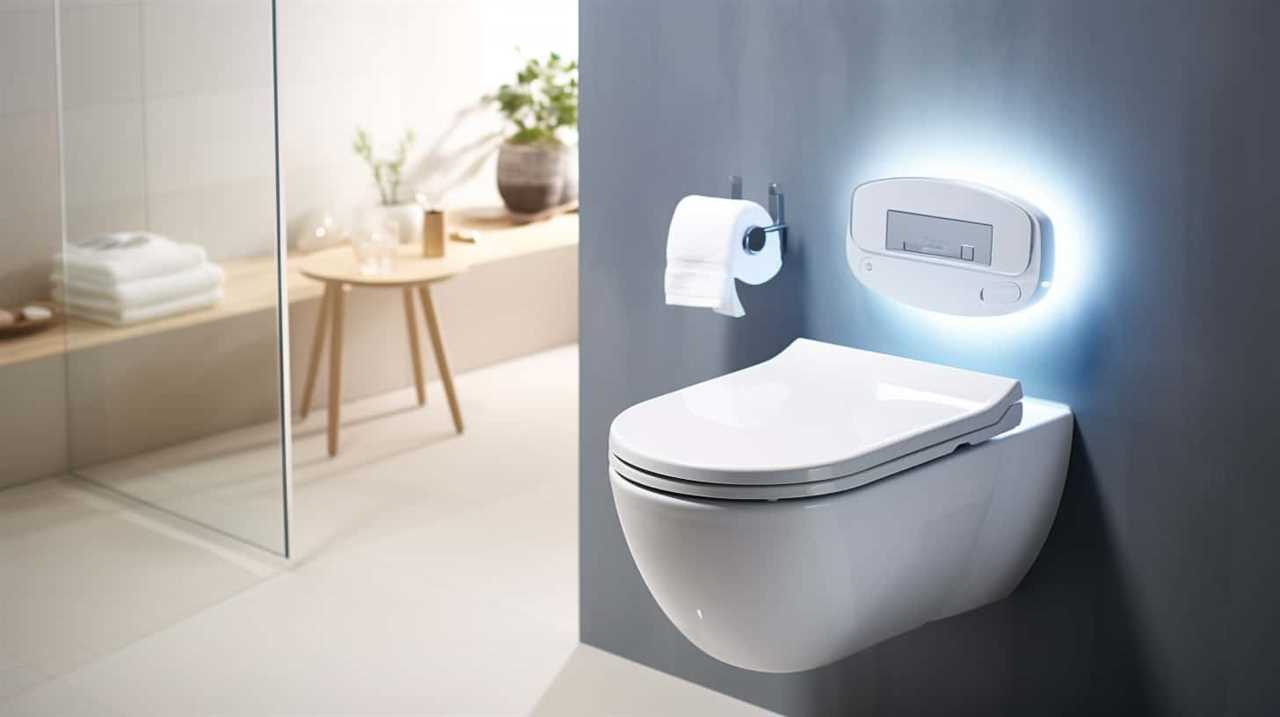
So, don’t hesitate to take charge and resolve the issue yourself.
Happy fixing!
